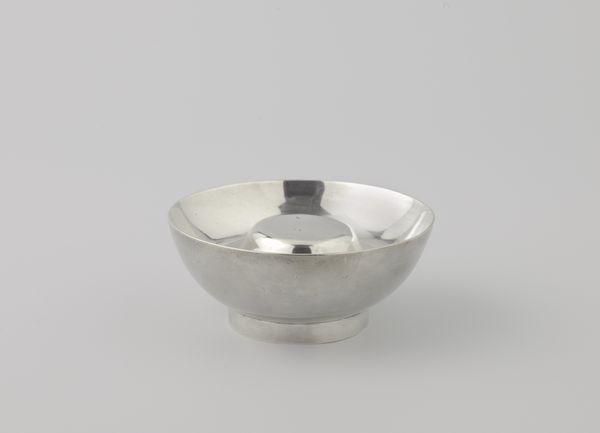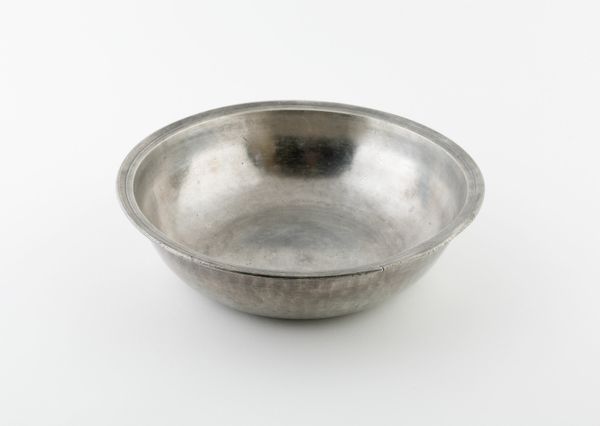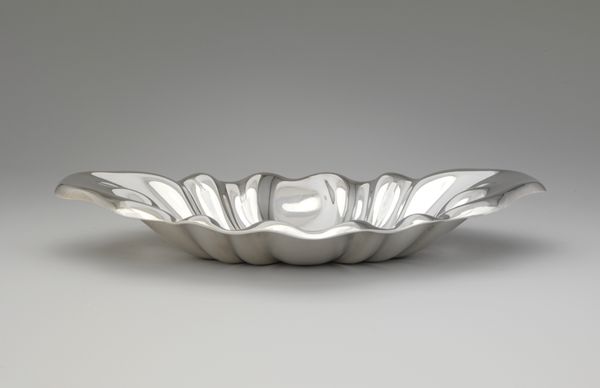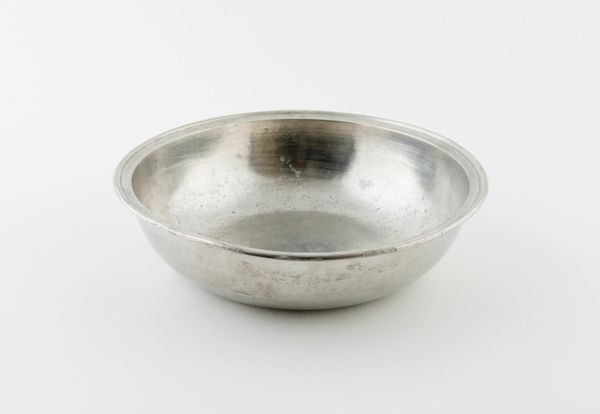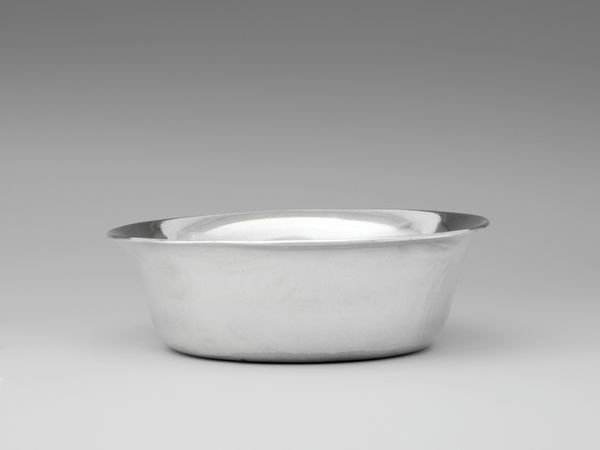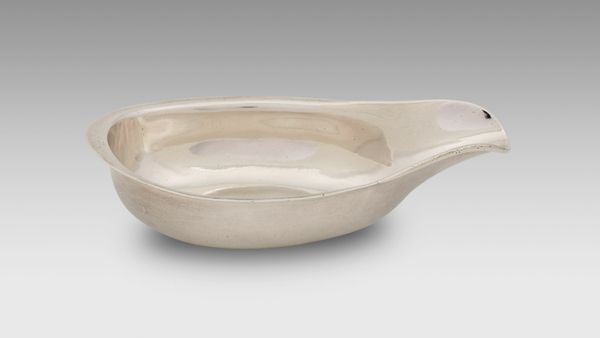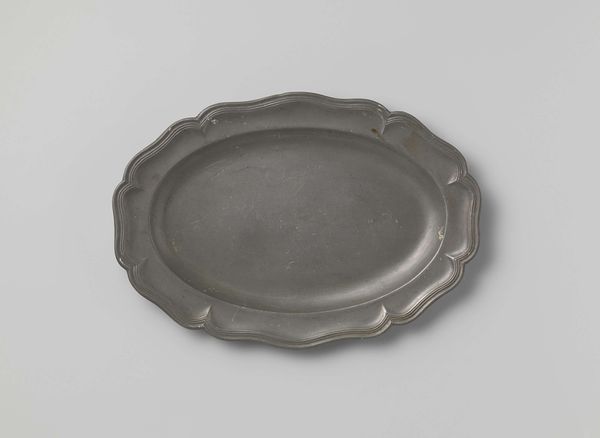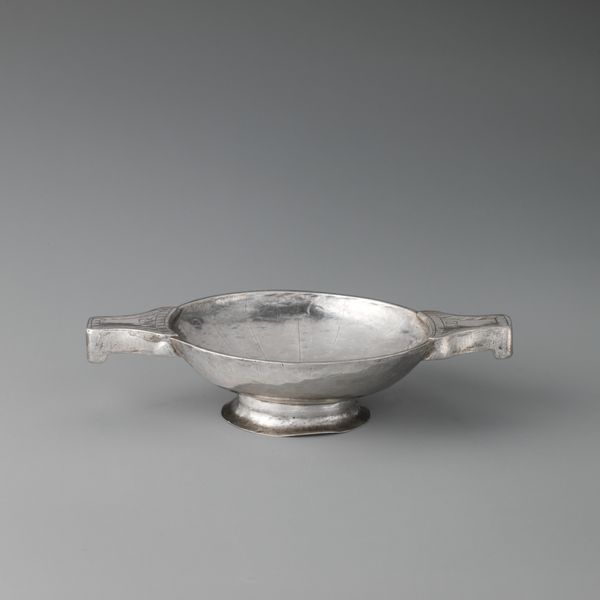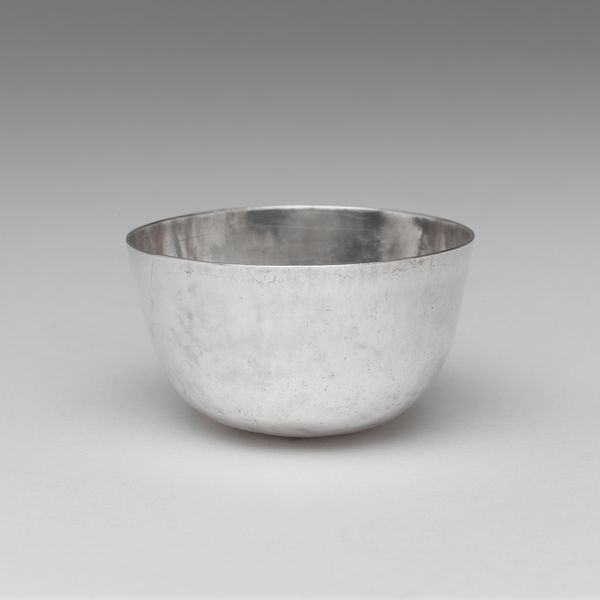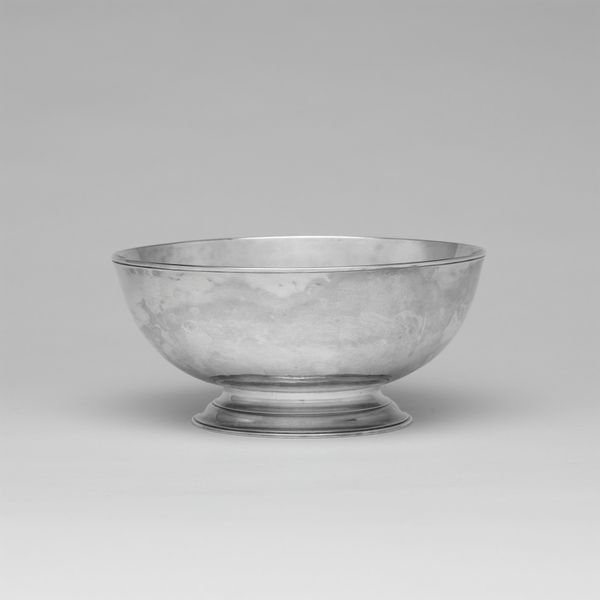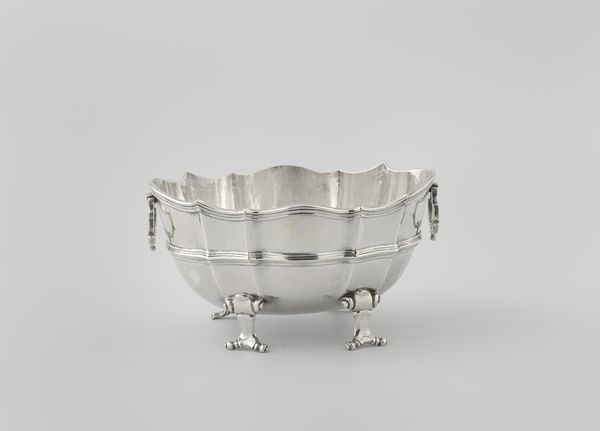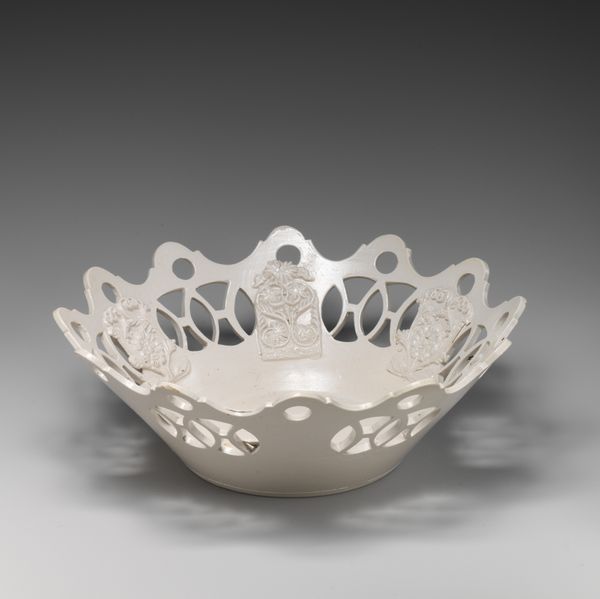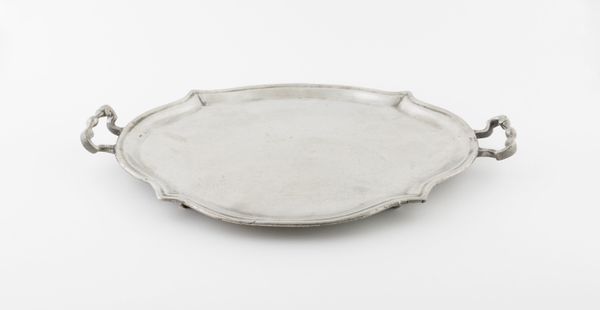
metal, sculpture
#
art-nouveau
#
metal
#
sculpture
#
decorative-art
Dimensions: height 5.0 cm, width 27.5 cm, depth 16.6 cm
Copyright: Rijks Museum: Open Domain
Curator: I find myself quite drawn to the subtle elegance of this piece. Its cool gray surface suggests a restrained sophistication. Editor: This is the "Presenteerschaal van tin," or Presentation Scale made of tin, crafted by Orivit around 1910. It exemplifies the Art Nouveau style in decorative art and sculpture. Right away I see the craftsmanship that speaks to me – the way the metal has been shaped. It almost invites touch. Curator: Yes, observe how the fluid lines and stylized organic motifs, like the abstracted floral forms at its corners, create a dynamic interplay of positive and negative space. The overall form undulates. A masterful exploration of visual rhythm and compositional balance. Editor: And thinking of Orivit, their specialization in metalwork reveals a focus on the properties of tin itself. They’re elevating a base material through skilled labor, blurring the lines between mass production and unique artwork by giving value to its fabrication and challenging the classical materials that people considered “art”. Curator: Precisely! The semiotic dimension of Art Nouveau is deeply embedded. The serpentine curves are suggestive. This is, of course, beyond mere ornamentation. Editor: But there’s also the question of access. Tin made objects like this available to more people than ever. How might it change home life, even subtly, when you present food or fruit using this beautiful scale? I imagine the worker who crafted the molds for its repeated form, perhaps under less-than-ideal circumstances in some factory. What kind of labor went into making such beauty? Curator: I see your point, and acknowledge its validity. However, viewing this solely through the lens of labor seems a rather reductive, shall we say vulgar approach, that reduces all to a narrative of struggle. What of beauty itself? The interplay between form and surface? Does this presentation not resonate with an artistic impulse? Editor: An artistic impulse, yes, rooted, I suspect, in very material realities of production and dissemination. Both feed and complicate the visual narrative of its art and craft movement origins. Curator: I must concede. We’ve excavated a complexity that goes beyond what initially meets the eye. Editor: It’s in holding those tensions, perhaps, that a deeper understanding can emerge.
Comments
No comments
Be the first to comment and join the conversation on the ultimate creative platform.
